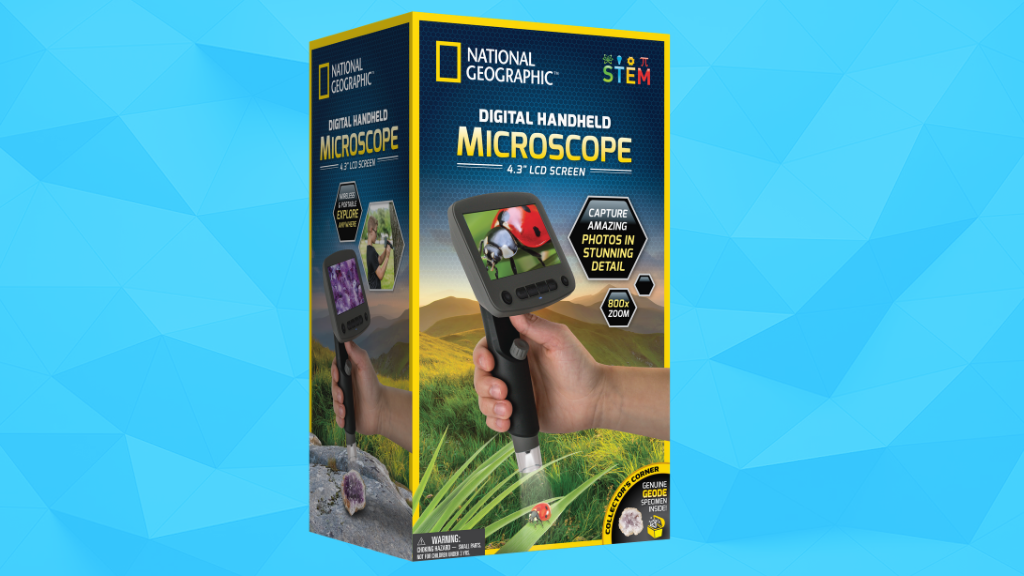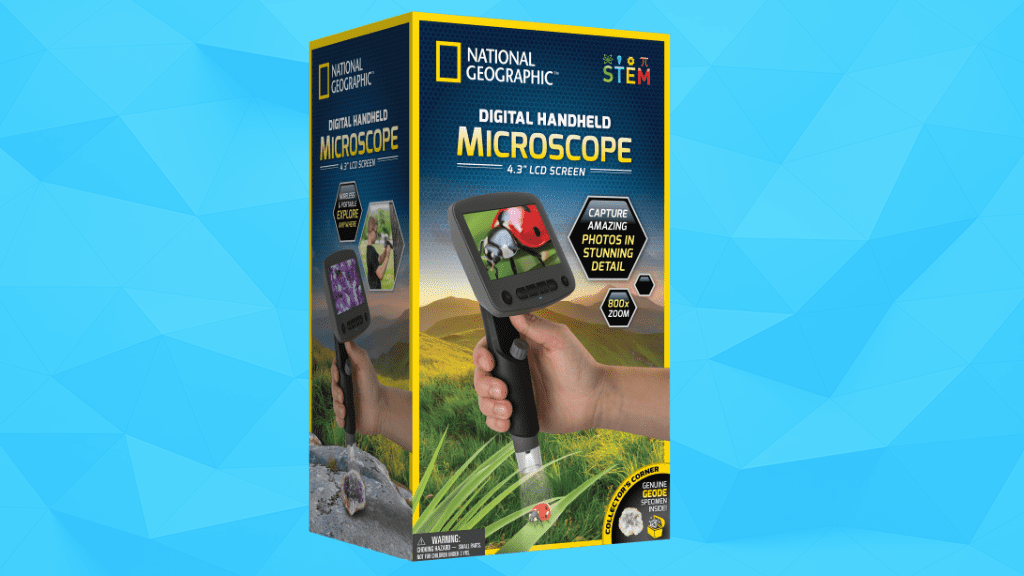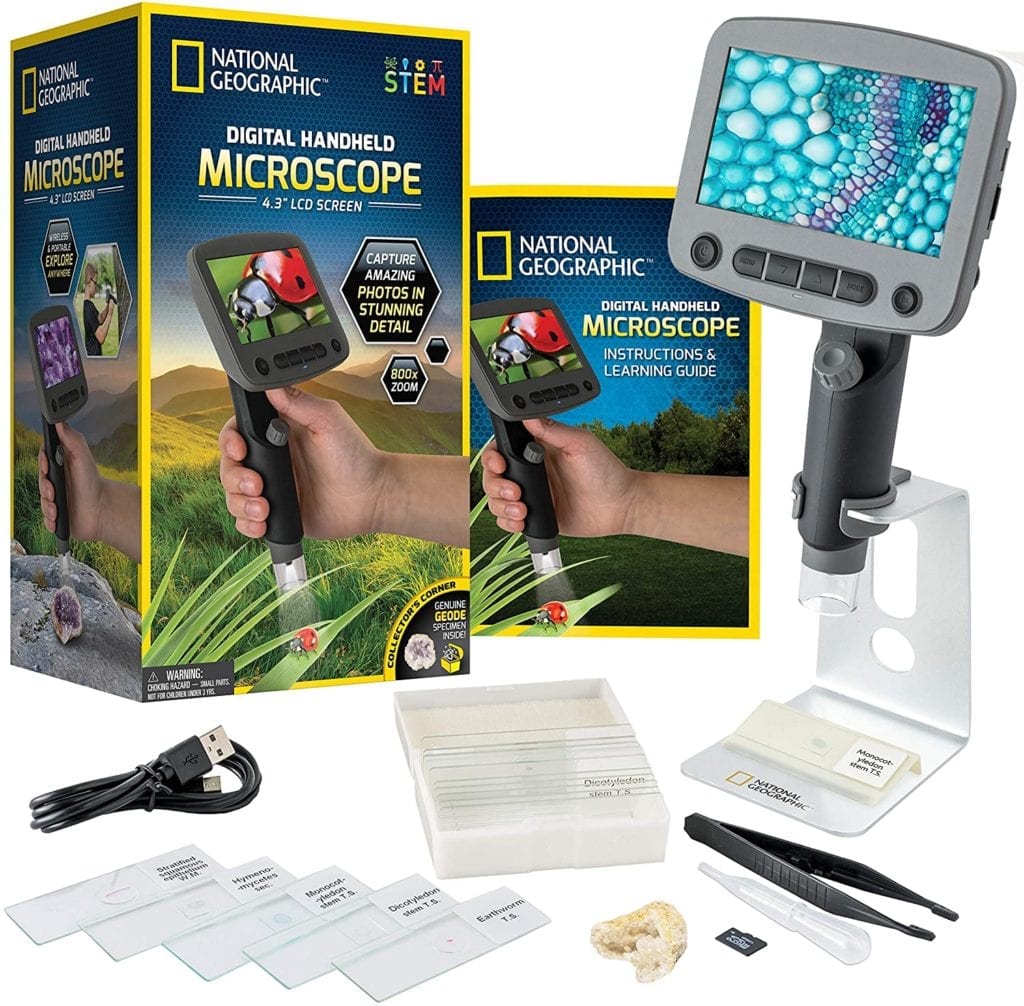More than ever before, we are closed off from the world.
Now, however, the National Geographic’s Digital Handheld Microscope from Blue Marble is a way kids can explore the world one microscopic object at a time. It lets them be a part of the environment and not just a passive observer. It lets them get off their tush and into the terrain!
The microscope is actually a tilting, 4.3-inch LCD screen. It projects a clear image of the specimen to be studied — whether it is a piece of hair or a leaf. The push-button allows kids to magnify objects up to 800x.
One of the coolest parts of the microscope is the built-in camera. It can capture high-definition photos and videos, which are stored on the included 128MB SD card. Then, you can transfer photos or videos to your computer — and even use the content for school projects.
The microscope can be used inside or outside (on a non-wet day), so the exploration possibilities are almost endless! Use the metal stand for classic science scrutiny, or just hold the grip and discover hidden specimens. The rechargeable battery lets kids explore without being plugged in, and parents will love that they don’t need to stock up on batteries.
Inside the box, you will receive almost everything kids need to scope, search, and scavenge like scientists. The set even comes with a mini geode to examine for out-of-the-box instant fun. The full-color learning guide provides information on biology and observation. Plus, the kit includes five professionally prepared biology slides and five blank slides. It gives upper elementary school-aged children a preview of science labs in middle school and beyond.
This microscope is especially helpful for children who need to learn while moving. This particular piece of equipment lets them get up and go to the object to study. Adults can make science fun by giving kids a scavenger hunt to find certain objects. This works on executive functioning skills as they find the objects in order. Plus, have them write a paragraph about each object they find on the list — just like a scientist would. It will work on writing competence, handwriting dexterity, and narrative skills. Kids can then share their findings with friends, family, and classmates on remote classes or virtual calls.
All in all, the National Geographic Digital Microscope can make science learning fun while teaching important observation skills in a way that gets kids up and out into the world.



